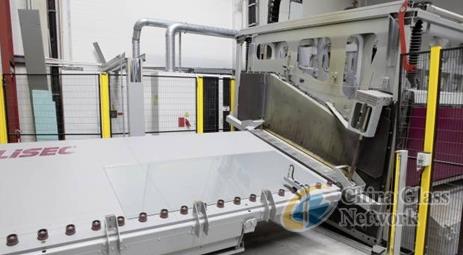Post Time:May 05,2016Classify:Company NewsView:394
In August 2013, the LiSEC development team started a major project with the mission of redesigning the tempering furnaces, to save manufacturing costs and at the same time increase the process reliability.

Exciting development for LiSEc Tempering division: Best practice at Internorm
The result is that Internorm, Europe’s leading window brand has already bought the new AEROFLAT – the tempering furnace has been running at full capacity at Internorm since March 2015.
“It was a large and especially exciting task because we knew we wouldn’t achieve the objective with minor measures so we pretty much started from scratch“, said Manfred Spreitzer, LiSEC project manager. The new AEROFLAT is technically more sophisticated and weighs almost 50 % less than its predecessor. The objective is therefore achieved.
The team achieved an almost 100% evenness by the still better design and the technically more sophisticated implementation of the ceramic air cushion bed in the furnace. This did not only lead to a processing result of the glass sheets with an even higher quality but also to an increased process reliability because the risk of damaged sheets is reduced.
The convection current in the furnace was optimized by means of a computer-aided flow calculation too, which simulates the convection. With the resulting lessons learned, the development team constructed a prototype as a model by means of which the team carried out the corresponding tests and again and again compared theoretical and practical values.
The team has revised the entire construction and, for this purpose, has used concepts from the light-weight construction. All in all, the developers were able to save approximately half of the weight without impairing the performance of the AEROFLAT. This weight reduction has advantages for the assembly (lighter engines and tools as well as simpler handling) but also for the customers due to lower transport costs and generally lower production costs. Spreitzer said “We have determined the optimum component strength and designed the construction so that we were able to save as much material as possible. Thus we were able to realize a reduction of the manufacturing costs of approximately 20%!“
An important aspect of the redesign was also the service and maintenance friendliness at the customer’s. Now, wear and maintenance parts can be removed and installed more easily due to the corresponding working height (ground level). Another factor brings benefits already during assembly due to the simplicity and optimum set-up times. “The redesign project has gone extremely well along our meanwhile very well established development process: we had a perfect cooperation of the different departments in a small team at one location,” said Spreitzer. What is particularly pleasing is the fact that the first tests have already been very successful and that the engineers had to do only minimal retouching. Spreitzer said “The first AEROFLAT was installed at Internorm and has been running smoothly for more than one year!
Markus Bernhuber, CEO of LiSEC in China said “So far LiSEC has sold and installed about 25 tempering furnaces, 10 in China, 15 in Europe. 50 % of them are continuous flow furnaces and went into the PV module manufacturing industry, the other 50 % are sold in other industries like electronics, automation lines, windows manufacturing industry, all of which are batch ovens.”
Norbert Jagereder, Head of the manufacturing organization insulating glass at Internorm discussed the project in an interview:
A question that bothers many insulating glass manufacturers: From which point on is it profitable to do the tempering in-house – why has Internorm opted for its own tempering?
Jagereder: In 2010 we decided to map safety glass via laminated safety glass (German abbreviation: VSG). But the demand for safety glass increased rapidly – therefore we additionally bought in 100.000 insulating glasses with single-pane safety glass (ESG) in 2014. For this purpose, we needed a larger warehouse and were dependent on suppliers in terms of price, quality and delivery times. This was the point when we decided to do the tempering ourselves. Now we are producing precisely at the time when we need it. Cycle or processing time and flexibility mean a lot of money for us because the point is to provide the insulating glass for the window production as fast as possible.
And what is more is that the customers’ demands are increasing constantly – if we do the tempering ourselves we can control the process on our own responsibility and we are able to respond faster in case of complaints or are able to avoid them altogether. This plays an important role in a major international company such as Internorm. At this point, I would like to mention the factor efficiency and the financial aspect. Due to the fact that we are now producing ESG ourselves we are able to produce more efficiently – we provide the panes 1:1 in the sequence required by our window production. And of course, more value added in-house and a more comprehensive knowledge also means a greater independence.
Source: www.glassonline.comAuthor: shangyi